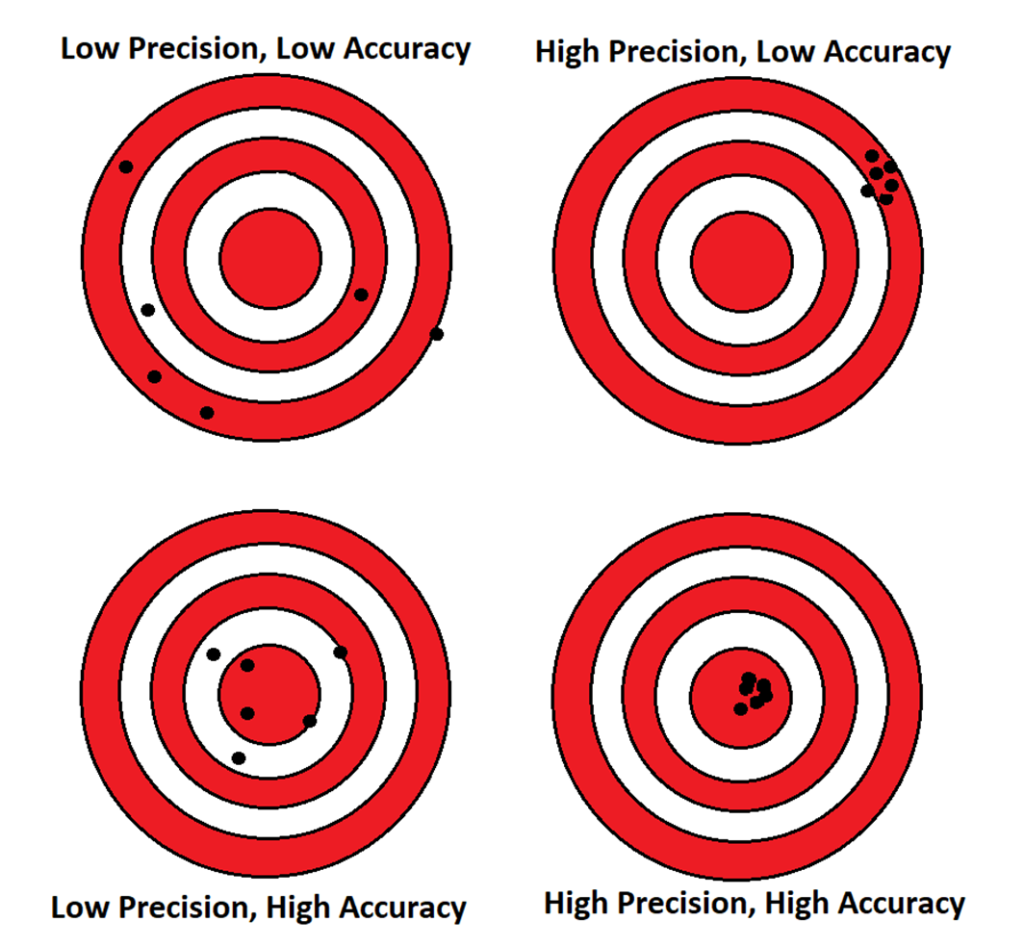Accuracy
Accuracy typically refers to how close a measurement is to its true value. In the context of aiming an imaging system, it describes how closely the system aligns with the intended viewing angle. Accuracy is often discussed alongside precision. Both concepts are best understood through a series of measurements, as there can be variations from one instance to another.
Accuracy and Precision. What’s the Difference?
Accuracy can be viewed as the average of multiple measurements compared to the true value, while precision refers to how consistent the individual measurements are with one another, regardless of their proximity to the target or actual value. This is often demonstrated using the analogy of shooting at a bullseye: if the shots are generally centered around the target but scattered, accuracy is good, but precision is poor. If the shots are tightly grouped but off-center, precision is good, but accuracy is poor. The ideal scenario is when the shots are both tightly grouped and centered on the bullseye, indicating that both accuracy and precision are high.

